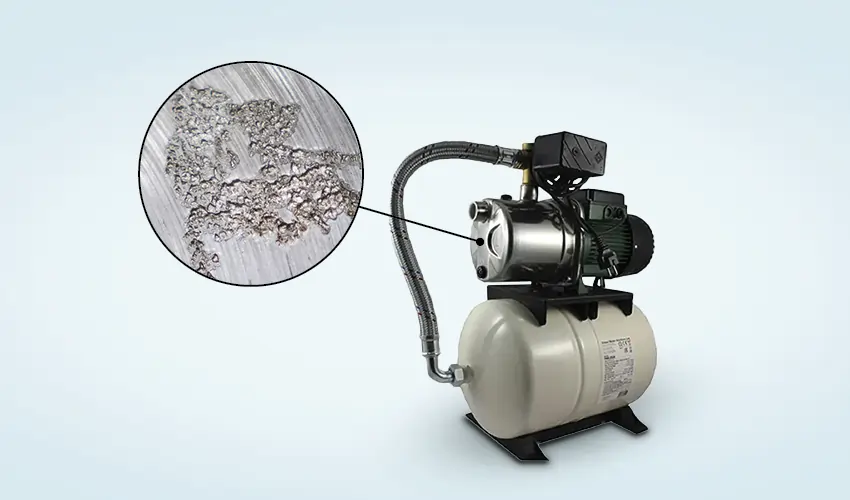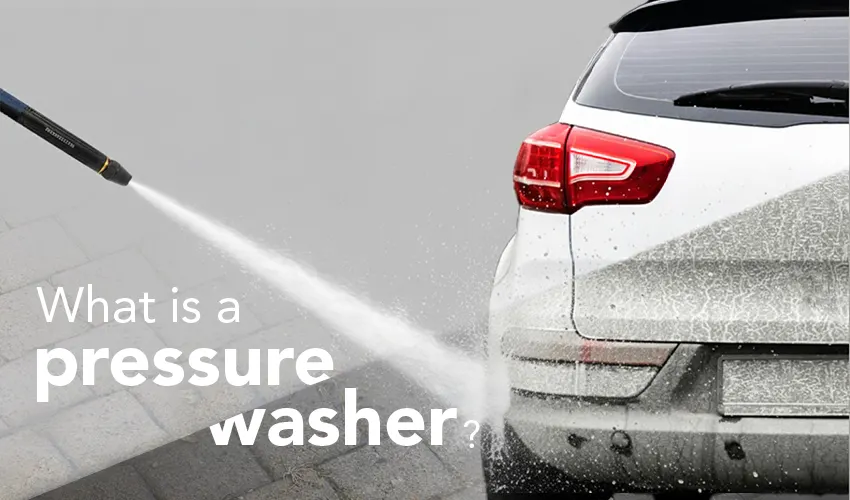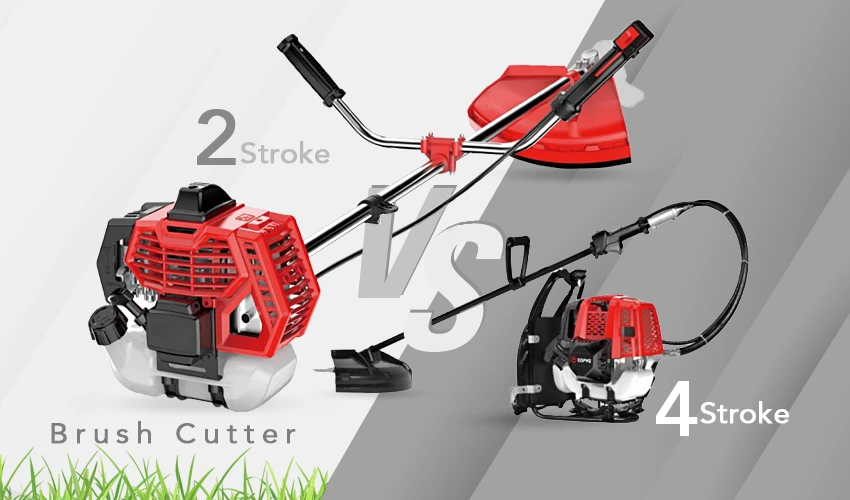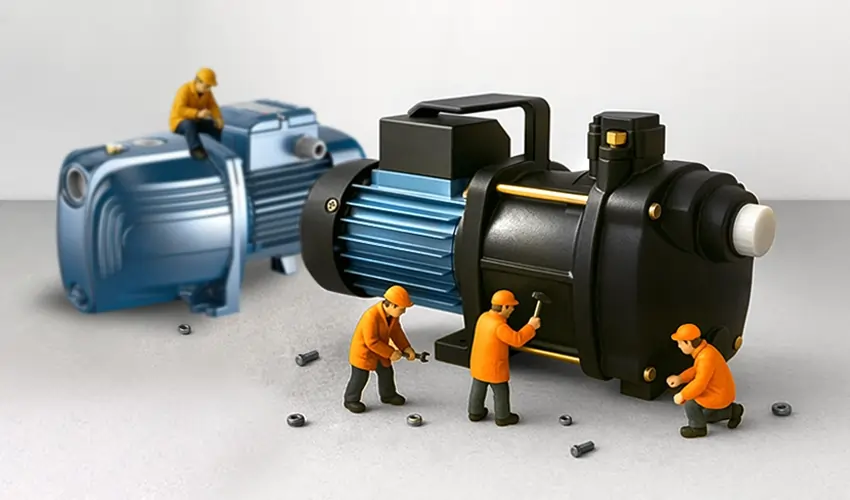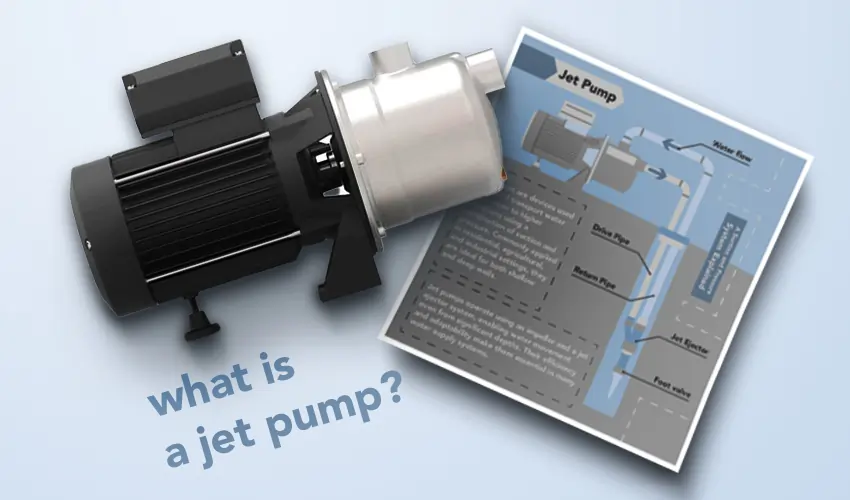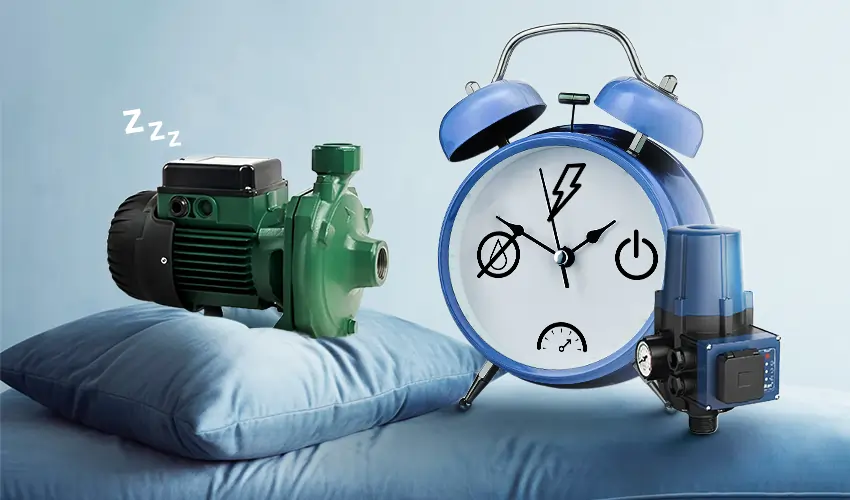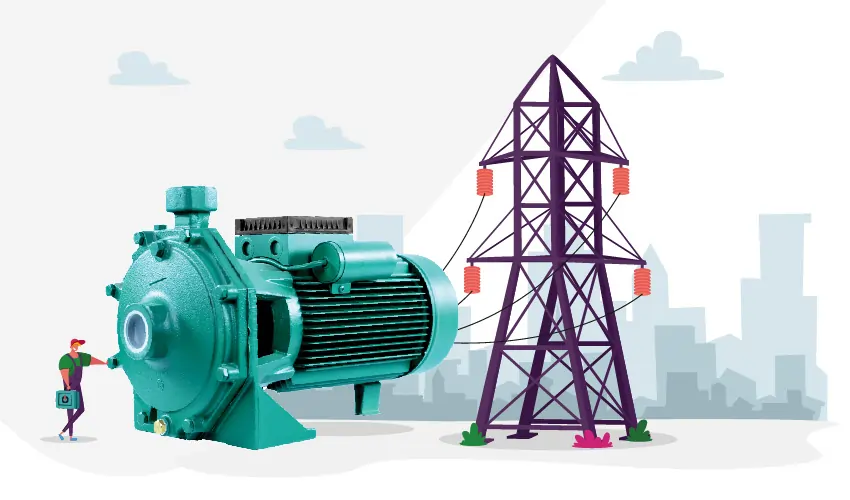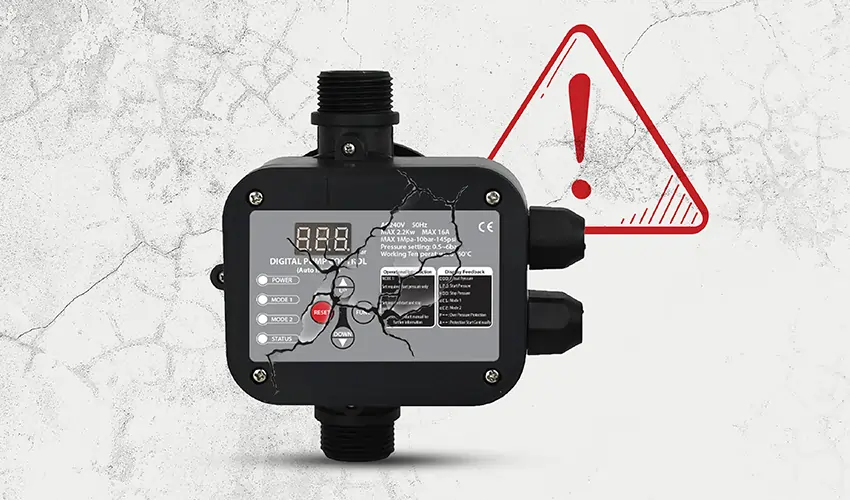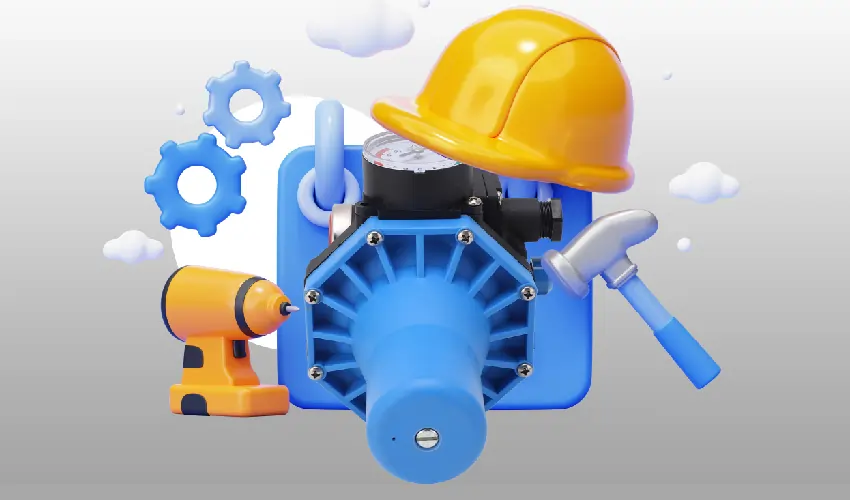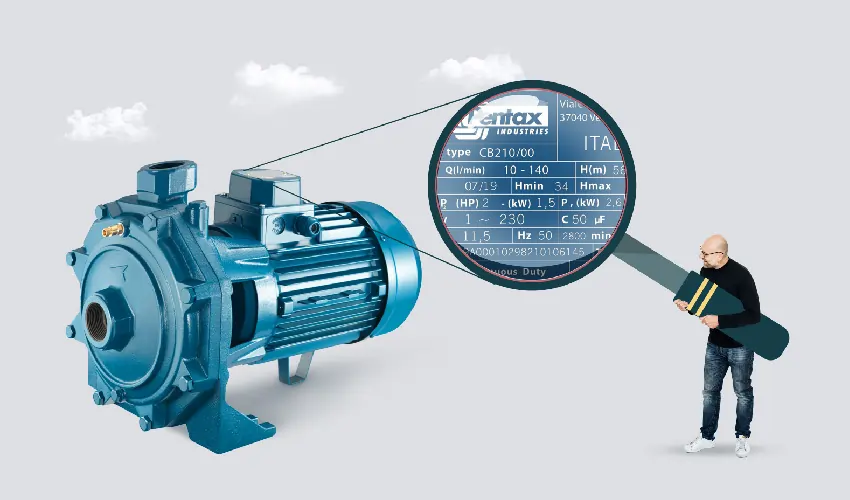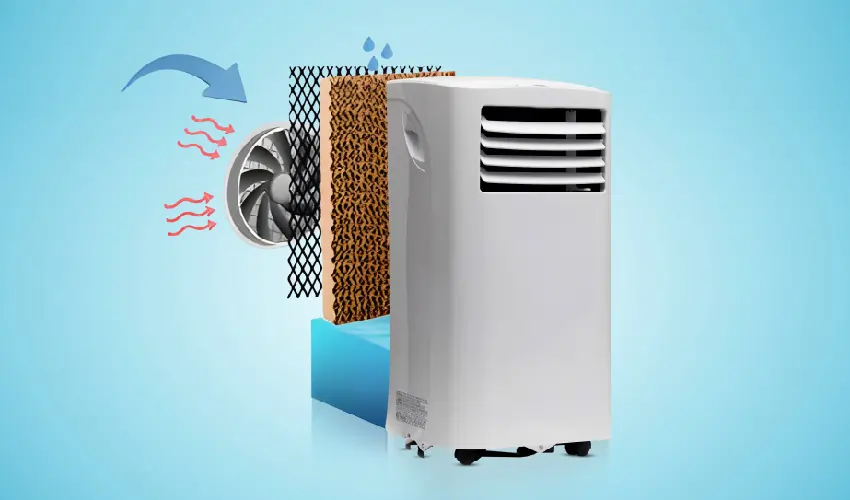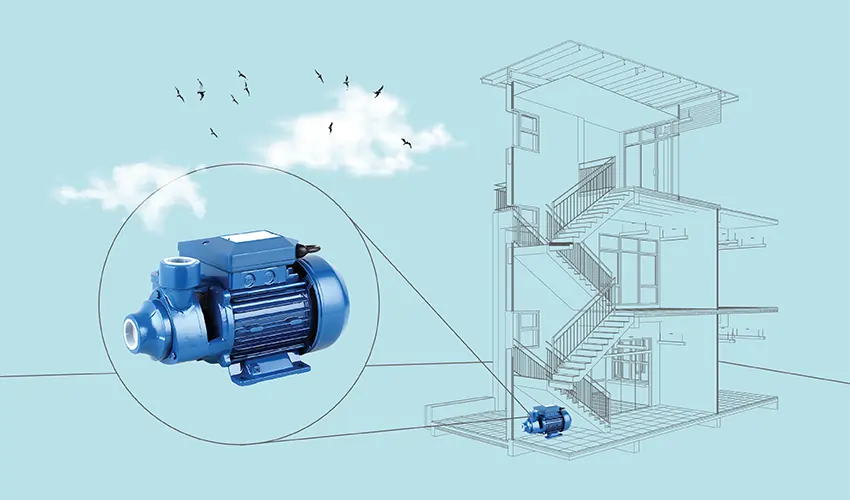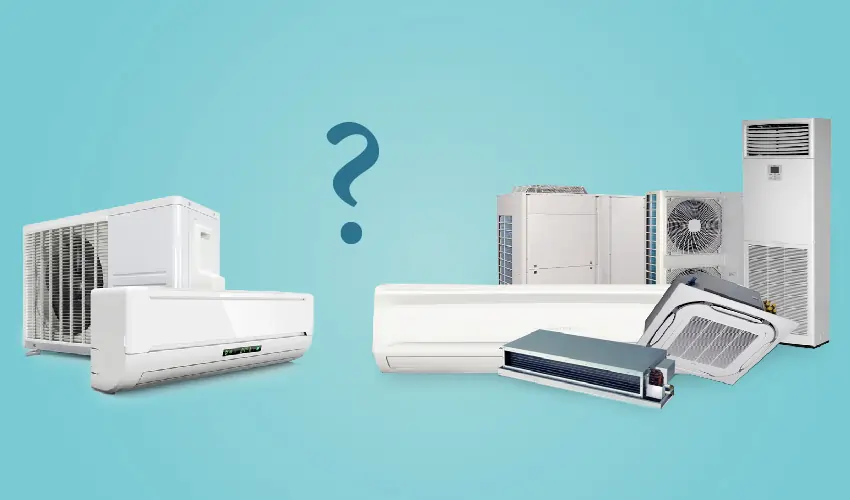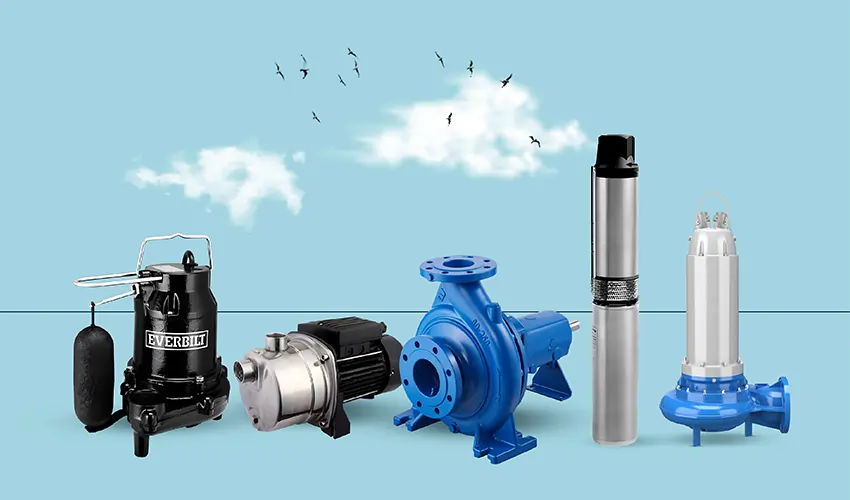Jet Pump Cavitation
Uncover the hidden threat within jet pump systems — cavitation. From efficiency loss to potential mechanical failure, understanding the effects of cavitation is key to ensuring a smooth and reliable water pumping operation. Dive into the preventive measures and maintenance practices to safeguard your jet pump from the damaging consequences of cavitation.
What is Cavitation in a Jet Pump
Cavitation in a jet pump refers to the formation and subsequent collapse of vapor or air bubbles within the pump due to low pressure conditions. It occurs when the pressure of the fluid (liquid being pumped) drops below its vapor pressure, causing the formation of bubbles. These bubbles then travel to areas of higher pressure within the pump, where they collapse or implode. The collapse of these bubbles creates shock waves and tiny, high-energy implosions. While individually small, the cumulative effect of numerous bubble collapses can lead to damage within the pump.
Cavitation is a concern in jet pumps, as it can result in various issues, including:
1. Reduced Pump Efficiency: Cavitation disrupts the smooth flow of liquid through the pump, leading to a reduction in pump efficiency and overall performance.
2. Vibration and Noise: The implosions of bubbles generate vibrations and noise, causing increased wear and tear on pump components and potentially leading to premature failure.
3. Erosion and Pitting: The repeated collapse of bubbles can cause erosion and pitting on the impeller and other pump surfaces, compromising their structural integrity.
4. Decreased Pump Lifespan: Cavitation accelerates wear on pump components, decreasing the overall lifespan of the pump and requiring more frequent maintenance or replacement.
5. Loss of Pump Performance: As cavitation progresses, it can lead to a loss of pump performance, reducing the pump’s ability to deliver the required flow rate and pressure.
To prevent cavitation in a jet pump, it’s essential to ensure proper priming and maintain adequate water levels in the pump to avoid the formation of air or vapor pockets. Additionally, maintaining the pump within recommended pressure and flow rate limits, as specified by the manufacturer, can help mitigate the risk of cavitation.
What Causes Cavitation in a Jet Pump?
Cavitation in a jet pump is primarily caused by conditions that lead to the formation of vapor or air bubbles in the liquid being pumped. The key factors contributing to cavitation in a jet pump include:
1. Low Inlet Pressure: One of the primary causes of cavitation is low inlet pressure. When the pressure at the inlet of the jet pump drops below the vapor pressure of the liquid, it can lead to the formation of vapor bubbles.
2. Air Entrapment: If there is air present in the pump or suction line, it can become entrained in the liquid, leading to the creation of bubbles during the pumping process.
3. Insufficient NPSHA (Net Positive Suction Head Available): The NPSHA is a measure of the pressure available at the pump’s suction side. If the NPSHA is insufficient to meet the pump’s requirements, it can result in cavitation.
4. High Pump Speed: Operating the jet pump at excessively high speeds can contribute to cavitation. The rapid rotation of the impeller can create low-pressure zones, promoting bubble formation.
5. Impeller Design: The design of the pump impeller plays a role in cavitation. Poorly designed impellers or those operating outside their recommended range can induce cavitation.
6. Elevated Liquid Temperature: High temperatures can reduce the liquid’s ability to hold dissolved gases, leading to the formation of bubbles. This is particularly relevant in applications involving hot liquids.
7. Blocked or Restricted Inlet: Any blockage or restriction in the inlet of the pump can disrupt the smooth flow of liquid, creating areas of low pressure conducive to cavitation.
8. Excessive System Pressure Drop: A significant drop in pressure along the suction line or within the pump system can contribute to cavitation. This can be caused by factors such as narrow piping or obstructions.
9. Incorrect Pump Installation: Incorrect installation, including improper alignment of components or inadequate priming, can create conditions conducive to cavitation. jet pump cavitation effects Cavitation in a jet pump can have several detrimental effects on the pump’s performance and overall system.
Here are some common effects of cavitation:
1. Reduced Pump Efficiency: Cavitation disrupts the smooth flow of liquid through the pump, leading to a reduction in pump efficiency. The formation and collapse of bubbles create turbulence, hindering the pump’s ability to operate at its optimal capacity.
2. Vibration and Noise: The implosion of vapor or air bubbles generates shock waves and vibrations within the pump. This can result in noticeable noise and increased mechanical stress on pump components. Excessive vibration can contribute to premature wear and damage.
3. Erosion and Pitting: The repeated collapse of bubbles against the pump impeller and other surfaces can cause erosion and pitting. This physical damage compromises the integrity of the pump components, leading to reduced longevity.
4. Loss of Pump Performance: Cavitation can lead to a decline in the pump’s performance, reducing its ability to deliver the required flow rate and pressure. This is particularly significant in applications where consistent and accurate water delivery is crucial.
5. Increased Operating Temperature: Cavitation can contribute to higher operating temperatures within the pump. The energy generated by the collapse of bubbles is converted into heat, potentially causing thermal stress on pump components.
6. Potential Mechanical Failure: Over time, the cumulative effects of cavitation can lead to mechanical failure. Damaged impellers, seals, and other components may result in the need for repairs or pump replacement.
7. Loss of Prime: Severe cavitation episodes may lead to a loss of prime, where the pump is unable to maintain the necessary suction to lift water effectively. This can interrupt the water supply and necessitate manual intervention to re-prime the pump.
8. Increased Operating Costs: The inefficiencies and damage caused by cavitation can contribute to higher operating costs. Frequent repairs, increased energy consumption, and the need for replacement parts can result in financial implications.
Conclusion
Jet pump cavitation can lead to a cascade of adverse effects, including reduced efficiency, increased noise and vibration, erosion of components, and potential mechanical failure. Addressing the root causes, such as maintaining proper suction conditions, avoiding excessive pump speeds, and ensuring correct installation and priming, is essential to prevent and mitigate the negative impact of cavitation. Regular monitoring, adherence to manufacturer guidelines, and prompt maintenance are crucial in preserving the pump’s performance and longevity.

